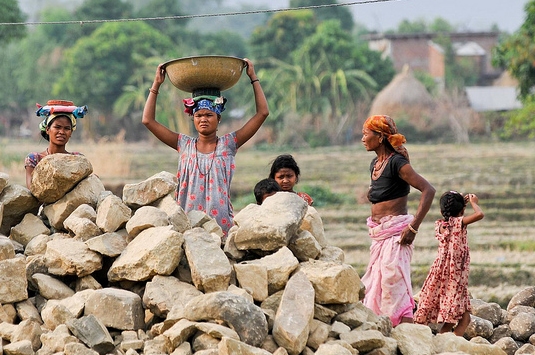
What’s in it for them? New CDKN ‘resource pack’ on climate change in Africa and South Asia

The Climate and Development Knowledge Network (CDKN) last week launched a comprehensive resource pack “to spark discussion about climate trends and action on climate change in developing countries.”
The pack includes two publications that distil the key findings of the IPCC’s Fifth Assessment Report (“AR5”) for Africa and South Asia, and free infographics, images and slides for communicators.
“The pack supports a series of public dialogues on the findings of AR5 which CDKN is organizing with the IPCC in Bangladesh, Ethiopia, India, Kenya, Pakistan, and Uganda” this month and next, said Mairi Dupar, CDKN’s UK-based Global Public Affairs Coordinator.
She adds: “It is also intended to help journalists and other communicators, policy-makers, development workers, civil society groups and businesses spread the IPCC’s messages in their professional communities and integrate its findings in their work.”
What’s in it for Africa looks at how climate change will affect food security, water availability and human health in Africa. It examines how climate change “will progressively threaten Africa’s economic growth and human security,” according to CDKN.
“Production of wheat and maize in parts of Africa has been impacted by climate change,” says CDKN, “as has the productivity of fisheries of the Great Lakes and Lake Kariba and fruit-bearing trees in the Sahel.”
Media toolkit
What’s in it for South Asia looks at how rising global sea levels affect South Asia just as most river deltas in the region are subsiding as a result of groundwater extraction, floodplain engineering and the trapping of sediment by dams.
In South Asia, the pathogens and parasites that cause disease multiply faster at higher temperatures, says CDKN, while studies have shown an association between diarrhoeal outbreaks and higher temperatures and heavy rainfall.
“Cholera outbreaks in coastal populations in South Asia have also been associated with increased temperatures and algal blooms,” it adds, while “climate phenomena, such as the El Niño, have been associated with cholera epidemics in Bangladesh.”
Both reports were compiled by experts from CDKN itself and the Overseas Development Institute, the UK’s leading think tank on development and humanitarian affairs, and include substantive input from the Climate Centre.
The infographics and presentations available with the media toolkit are intended to be used for educational purposes and to generate discussion.
Women in a farming community in western Nepal. They face higher temperatures and different rainfall patterns, making successful cultivation harder. But an “expected future climate” project may help them develop coping strategies in advance.
(Photo: Neil Palmer/CIAT via CDKN)